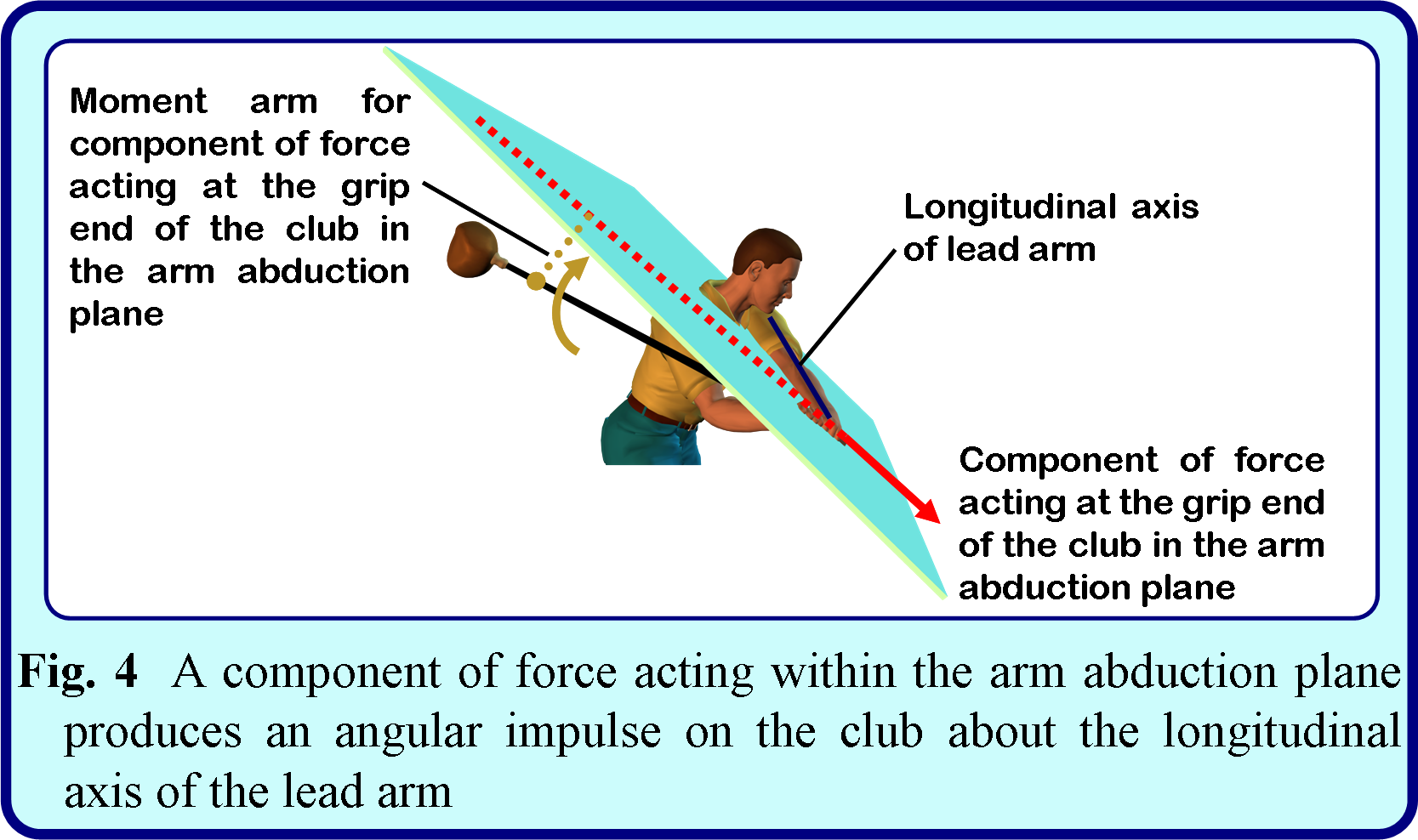Professor MacKenzie learned how to swing so powerfully with one arm thru his extensive research in human kinetics. I was pointed in the direction of his research on the swing plane
http://people.stfx.ca/smackenz/swingplane.html
Here’s what I gather from it:
By manipulating the initial amount of forearm rotation, the affect of starting the downswing with the club ‘above’ and ‘below’ the swing plane was evaluated.We’ll take a simple, 2-dimensional model of a swing plane (the swing plane is actually 3D, but we won’t get into that at this moment).
MacKenzie tested what the results would be, via some manipulation of the forearm rotation, when the clubhead is above the plane versus when it is below the plane in the initial part of the downswing.
Starting the club below the swing plane generated positive angular momentum about the longitudinal axis of lead arm resulting in the club face completely squaring at impact. Starting the club above the swing plane generated negative angular momentum resulting in the clubface remaining significantly open to the target line at impactSo if the clubhead starts below the plane, the clubface will square up at impact. If it gets above the plane in the startdown, the clubface will open up at impact.
Then he shows models of this on his Web site (pay close attention to where the clubhead is at the beginning of the swing in his mechanical models on his site).
I think most of us understood this to some degree. Although it does say that they need to manipulate the forearms to some degree to get the clubhead above the plane or below the plane.

A couple of things I think from this:
1. If this is the case, I do not favor Brian Manzella’s ‘tumble’ move. I would prefer what he calls the ‘reverse tumble.’
I think his ‘tumble’ move can work, but I’d be too afraid to do that with fear of getting the clubhead above the plane in the startdown.
2. We’ve discussed controlling the face versus controlling the path first. This basically shows how the path could cause the face to get open at impact. However, instead of thinking ‘swing out to right field’, perhaps we need to worry about the forearm rotation on the start-down.
3. Lastly, I think this study favors heavier clubs. Like Brian discussed in his video, you’ll need some gravity to help reverse-tumble the club. I think lighter clubs make it harder for gravity to take over and do its job.
3JACK
1 comment:
Post a Comment